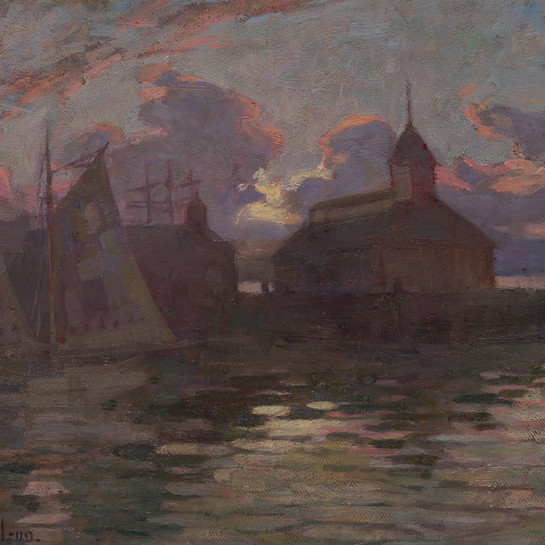Wilhelm Dittmer
Germany, b.1866, d.1909
The Alarm
- 1905
- Oil on canvas
- Purchased, 1994
- 1025 x 825mm
- 94/42
Tags: cloaks, kākahu, koru (pattern), Māori (culture or style), men (male humans), moko, musical instruments, patterns (design elements), people (agents), portraits, seashell, spirals (geometric figures), tattoos
Exhibition History
The 19th century European fascination with exotic indigenous cultures saw the Maori as a primitive race, unspoilt by the evils of industrialisation and close to nature. Here using the portrait format, Dittmer has focused on the tattooed face, richly bordered flax cloak and conch shell for a stereotypical image of a Māori chief. The model for the painting is unknown but the subject is of ancient courage and wisdom confronting the uncertainties of the changing times. This work arises from a romantic interest in the 'noble savage' which was popular in European painting at this time and saw the Maori as an exotic and disappearing race. (Label date unknown)
The model for this painting is unknown but the subject is that of ancient courage and wisdom confronting the uncertainties of changing times. The old Māori warrior grips the conch shell traditionally used to sound the alarm. Wilhelm Dittmer's painting belongs to the late 19th, early 20th century popular genre of the exotic savage of a noble, but dying, race. Dittmer would have been aware of other New Zealand artists, in particular C.F. Goldie (1870 - 1947) and G. Lindauer (1839 - 1926) who painted Māori portraits. Like them, he worked from photographs and sketches for his paintings, rather than models. German born, Dittmer worked as a graphic artist in Germany and Paris in the late 1880s and 1890s. He came to New Zealand in 1899, attracted by the idea of painting Māori. Dittmer lived in Auckland, Taupo and Wanganui and exhibited with a number of art societies but was not an active member of any of them. He returned to Germany in 1904 and subsequently published two illustrated books on his New Zealand experiences. (Probably for opening hang, May 2003)

